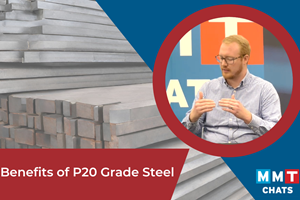Materials Prices: Short-Term Pain May Result in Long-Term Gain
At first glance, the accompanying chart of steel prices tells a disturbing story.
At first glance, the accompanying chart of steel prices tells a disturbing story. After hitting an all-time high in mid-2008, prices descended during the next year or so. During this period, the U.S. economy was suffering through a deep and prolonged recession, so it is not surprising that the price of steel would drop. This is especially true given the fact that steel prices were so high before the recession started. However, there is a catch. Steel prices did not fall nearly as far during the recession as they had escalated during the previous five years of economic expansion.
The recession officially ended in mid-2009, and by the time it was over, industrial output was at its lowest level since the mid-1990s. As the recession came to an end, that is when steel prices started to rebound as well, and they have advanced steadily for the past three quarters. The problem is that not only are prices currently rising at a pretty aggressive rate, they started this uptrend from a very high level. And this is at a time when the U.S. economy is just starting to recover from the recession, and domestic demand for steel products is still relatively low.
To put it another way, the total level of U.S. industrial production is currently still about 12 percent below the last peak posted in 2007. But steel prices are already up to their 2007 levels. The implication here is that the price trend will accelerate upward as the rates of U.S. economic growth and industrial output gain momentum.
In the short-term, this will put pressure on the profit margins of moldmakers who are struggling to recover from the recession amidst sputtering demand from most durable goods end markets. But after the initial price shock, the plastics industry should benefit from the substitution of plastics parts for higher priced metal parts. For instance, in the auto industry there is an all-out effort to make cars lighter by replacing steel parts with parts made from lighter materials (such as plastics) and thereby make them more fuel-efficient. The rising cost of crude oil is the main force behind this effort, but the rising cost of steel products will also be a factor.
The other price trend that may affect moldmakers in the coming months is the price of resins. Resins prices correlate closely with the price trend for crude oil. The recent pattern in crude oil prices is the same as the trend for steel prices. After hitting a very high peak in the middle of 2008, they plummeted rapidly during the recession. But crude prices increased for most of 2009, and they too are now back to their 2007 levels.
High resins prices impinge on the profit margins of injection molders, and in some cases, this may constrain the release of new projects and the orders for new molds. But again, this should be a short-lived restraint. There is some evidence to suggest that resins prices may decline in the coming years because of a huge increase in the amount of global production capacity that is scheduled to come on line in the coming year or two.
The result of all of these changing market dynamics is that the fundamentals that most directly affect the demand for new molds could be quite strong in the coming years once the pending economic recovery really gets rolling. Plastic parts could become substantially cheaper to manufacture and use than steel parts, and this will spur demand for new molds. Of course, these prognostications are uncertain, so moldmakers will have to monitor all market trends on a regular basis. So stay tuned.
Related Content
Coating Technology Enables Tough Mold and Die Steel Machining
Millstar, a part of Cole Tooling Systems, presents a multi-layer hybrid nanocoating for cutting tools that provide key benefits for increased efficiency in any machining operation.
Read MoreProject Reveals Added Benefits of New P20 Grade Steel in Machinability, Cycle Time and No Stress Relief
MoldMaking Technology's Christina Fuges talks with General Motors' Shane Appel about a project testing a new P20 steel grade's dimensional stability.
Read MoreReliable, Efficient 3D Printer for High-Quality Tool Steel Components
The updated TruPrint 2000 underscores Trumpf’s focus on the tool and die industry, including a larger, square build plate and various features to ensure high quality and mass production.
Read MoreWhat You Should Consider When Purchasing Modified P20 Steel
When buying P20 steels that have been modified, moldmakers must be aware of the variations and key issues that affect delivery, cost and lead times.
Read MoreRead Next
How to Use Continuing Education to Remain Competitive in Moldmaking
Continued training helps moldmakers make tooling decisions and properly use the latest cutting tool to efficiently machine high-quality molds.
Read MoreAre You a Moldmaker Considering 3D Printing? Consider the 3D Printing Workshop at NPE2024
Presentations will cover 3D printing for mold tooling, material innovation, product development, bridge production and full-scale, high-volume additive manufacturing.
Read MoreReasons to Use Fiber Lasers for Mold Cleaning
Fiber lasers offer a simplicity, speed, control and portability, minimizing mold cleaning risks.
Read More











.jpg;maxWidth=300;quality=90)









